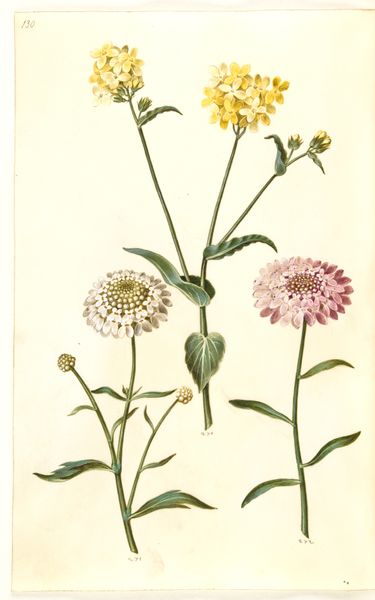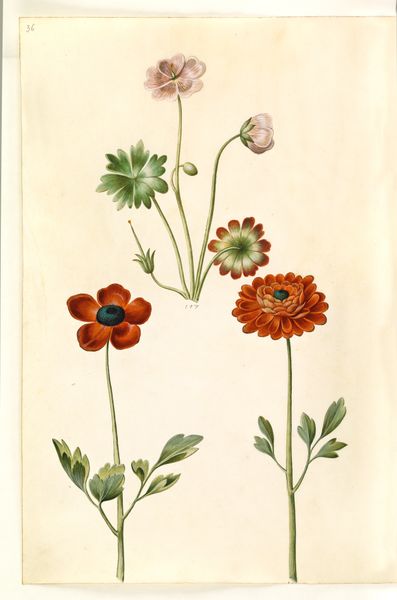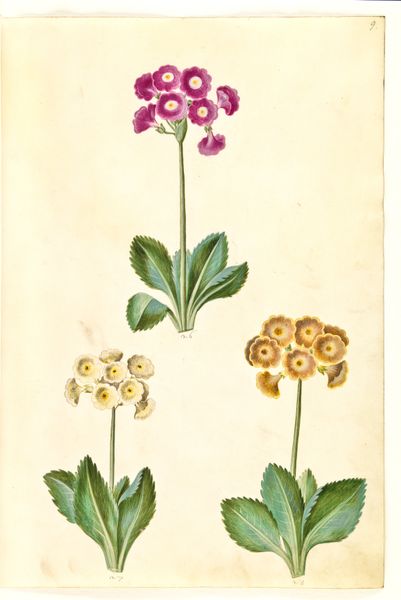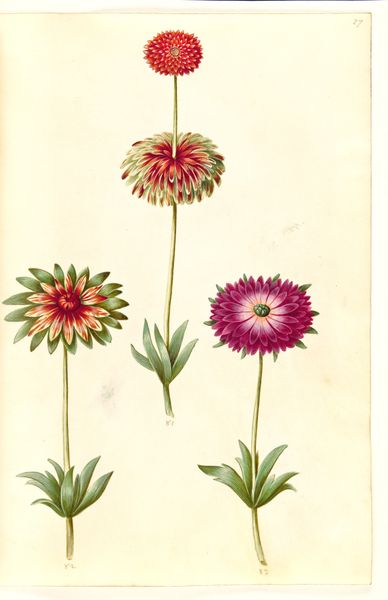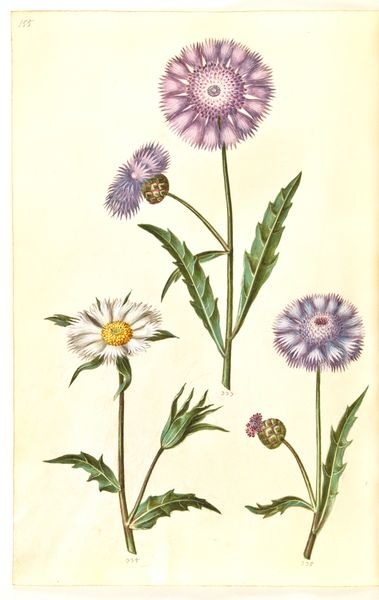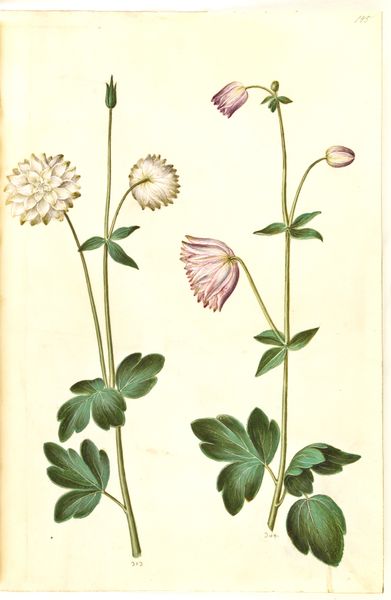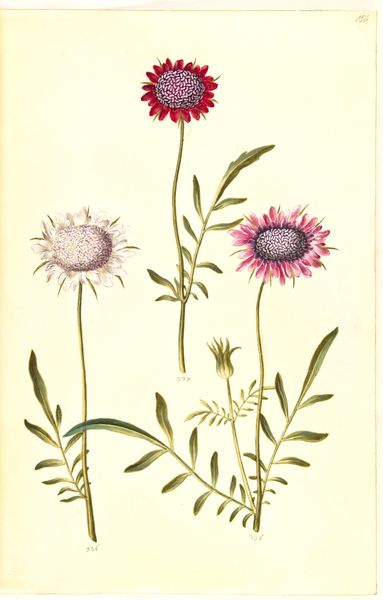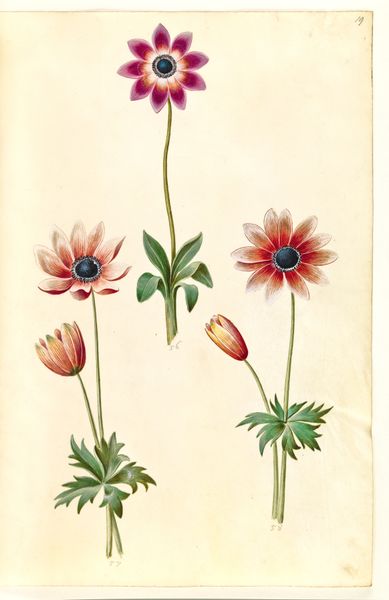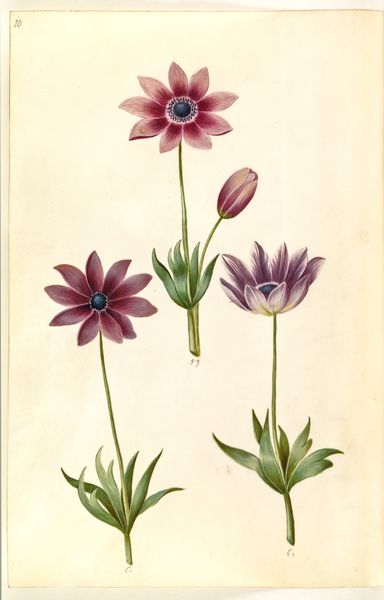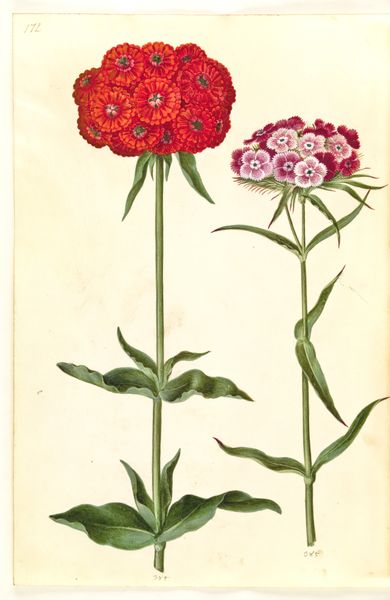
Lunaria annua (judaspenge); Doronicum pardalianches (hjertebladet gemserod); Adonis vernalis (vår-adonis) 1635 - 1664
0:00
0:00
drawing, painting, gouache, watercolor
#
drawing
#
baroque
#
painting
#
gouache
#
watercolor
#
botanical drawing
#
watercolour illustration
#
botanical art
#
watercolor
Dimensions: 375 mm (height) x 265 mm (width) x 85 mm (depth) (monteringsmaal), 358 mm (height) x 250 mm (width) (bladmaal)
Editor: This botanical illustration, "Lunaria annua; Doronicum pardalianches; Adonis vernalis" by Hans Simon Holtzbecker, probably created between 1635 and 1664, uses watercolor and gouache to depict three distinct flower specimens. I'm struck by the delicate detail and scientific accuracy of the rendering, but I'm wondering, what stories do you think this botanical study whispers? Curator: Whispers, you say? It indeed hums with quietude. I see in it not just meticulous observation but a deeply personal connection with the natural world. Holtzbecker’s flowers aren't simply representations; they feel like portraits. The delicate use of watercolour captures a sense of ephemeral beauty, don't you think? The kind that poets would lose sleep over! The Baroque love for detail certainly sings here. And, perhaps even a subtle meditation on mortality. I wonder, looking at it now, which bloom most arrests your gaze? Editor: I'm drawn to the "Lunaria annua," the one with the purplish blooms – its fragility juxtaposed with the solid leaves speaks to me. I'm curious, do you feel that Holtzbecker was simply recording the species, or imbuing them with some form of symbolism or emotion? Curator: I sense he's walking the delicate tightrope between documentation and devotional art. In that era, nature was a language of God; to depict it was to decode divine secrets. And yes, whilst Holtzbecker painstakingly records details, the isolated presentation and artful arrangement hints he saw each plant as a distinct personality, not just part of an inventory. He isolates these florals from any external background as if seeking to lift up their divine quality. Editor: It's like each flower is having its portrait taken. Curator: Precisely! A testament to the unique soul held within each creation. Now, how do you see this connecting to today's ecological movements, this mindful reflection on individual flora? Editor: It's amazing how relevant something from so long ago can still be! Maybe it's a reminder that appreciating individual beauty leads to caring about broader ecosystems. Thanks for that perspective. I'll never look at botanical art the same way again!
Comments
No comments
Be the first to comment and join the conversation on the ultimate creative platform.
